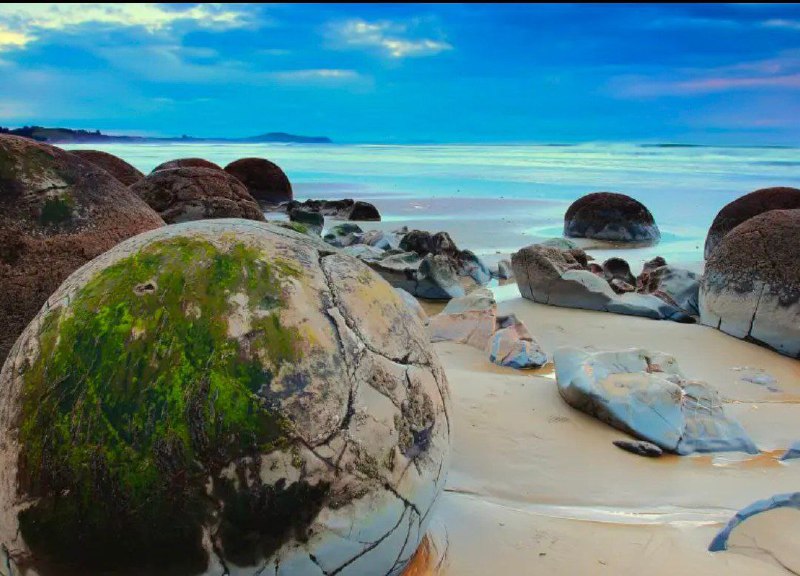SKIMMING
MOERAKI BOULDERS
SPHERICAL BEACH ODDITIES
Wander down to New Zealand's Koekohe Beach on the Otago coast and you'll see what look like gigantic petrified coconuts scattered in the sand. These are the famed Moeraki Boulders, known affectionately by some locals as "giant gobstoppers of alien brains." About 50 of these near-spherical boulders line the beach, with some measuring upwards of 10 feet in diameter and weighing several tons.
The boulders are what geologists call concretions, which are cemented masses of mineral deposits, often rounded that form within a matrix of sedimentary rock. Typically harder than the surrounding rock, concretions can be exposed as shoreline erosion removes the enclosing layers. They're characterized by hollow cores and unusual cracks lacing their surface. These cracks, called septaria, have been filled in with calcite, quartz, and dolomite, giving them a distinct yellow-brown line pattern.
Native Polynesians of New Zealand, called the Maori, have their own mythological explanation for how the stones came to be. According to legend, the rocks are bottle gourds, eel baskets, and other wreckage washed ashore from the Araiteuru, a large waka, or sailing canoe, that sank off the coast of Shag Point.
Image credit: Fukruljamil/Thinkstock
>>Click here to continue<<

